An interview with Ronna Chao, the multi-talented inventor of The Billie System
Ronna Chao sat down with TMS to give us a bit of insight into her life and the innovative Billie System – an eco-friendly method of recycling textile waste without using water.

A few minutes every morning is all you need.
Stay up to date on the world's Headlines and Human Stories. It's fun, it's factual, it's fluff-free.
Ronna Chao sat down with TMS to give us a bit of insight into her life and the innovative Billie System – an eco-friendly method of recycling textile waste without using water. Chao grew up with textiles in her soul, with her family solidly planted in the textile industry. First starting with yarn spinning and sweater manufacturing, the family business expanded into fabric dyeing, printing, denim weaving and garment manufacturing, catering for both lifestyle and luxury brands.
Now, Chao is Chairperson of Novetex Textiles Limited, a generationally-loved business founded by her grandfather. As a leading figure in textiles, Chao continues to innovate the industry, her passion for the environment leading her to develop new and special ways to reduce waste and empower positive change. The Billie System upcycling is the newest addition to the Novetex family.
But Chao wears many hats. She is not only the Chairperson of Novetex – she's also CEO of Novel Investment Partners Limited and Director of Novelpark Investments Limited, carrying the responsibility of leading the teams in their investment and portfolio management efforts. She's also CEO and Board Chairperson of Bai Xian Asia Institute (BXAI), an educational platform whose mission is to build bridges across cultures by developing a new generation of leaders through scholarships and educational programs for intercultural exchange and learning.
To top off Chao's impressive portfolio, she's also the proud mother of a 25-year-old son, a 22-year-old daughter and an 18-year-old daughter, and she's been happily juggling her career and motherhood since 1996.
Today, we zoom in on her experience with her family business of textiles – precisely her experience in launching The Billie System.
Gaps to fill in the textile industry
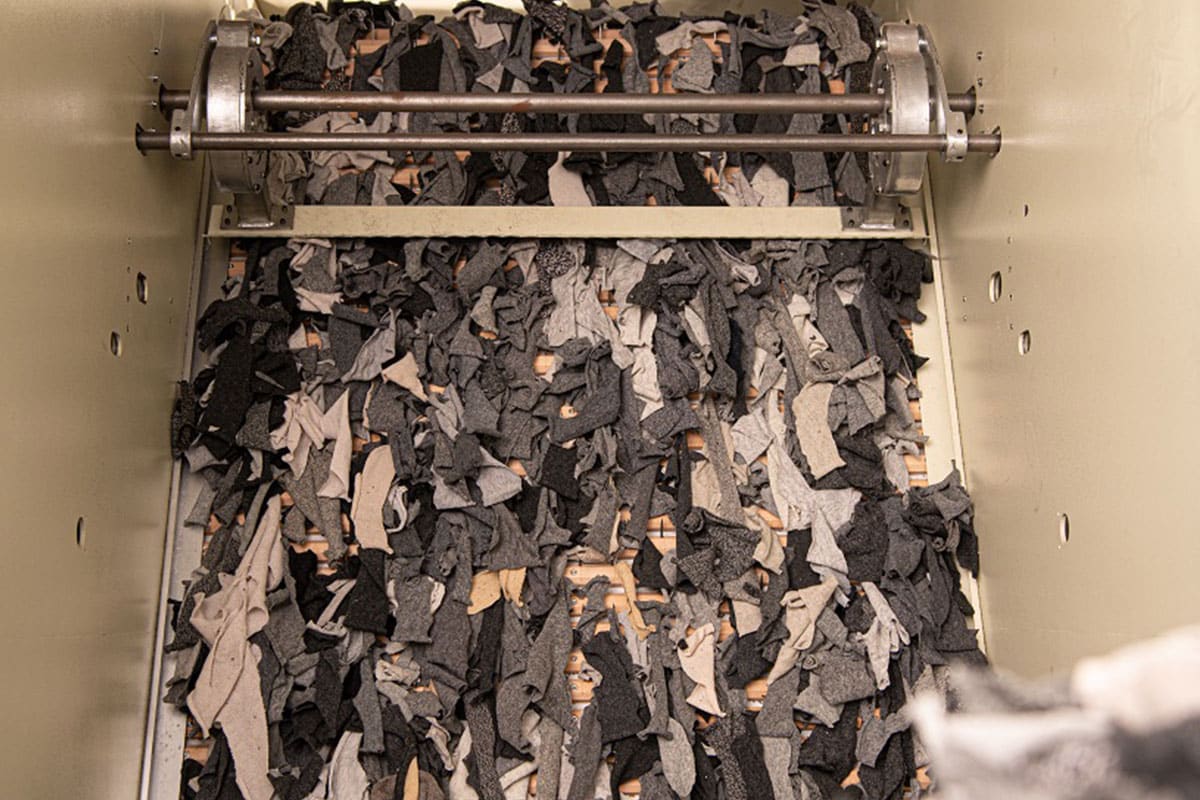
Q: Can you tell us more about the issues of textile waste and how it's an issue in Hong Kong, specifically?
A: The issue of textile waste is prevalent around the world, especially in developed countries and regions. When production cost becomes lower and efficiency becomes higher, and consumption power increases, making, selling, buying anything, including textile products, become less and less out of necessity. What's worse, discarding things is often driven by the desire/habit to get something new. In Hong Kong alone, over 370 tons of textile waste end up in our landfills daily, and this statistic is not even for the current year. While not everything is recyclable, one can imagine how the landfills are reaching full capacity stuffed with all these things that will not decompose or disintegrate within a short time. We do not have unlimited landfills, and we don't have good systems to sort the waste, let alone recycle it. You can just imagine where we will be if nothing changes.
Q: What is upcycling? How is it a solution to textile waste?
A: Upcycling, in general, means finding another purpose for an item when it reaches end-of-life. In our case, as a textile manufacturer, we process textile waste through The Billie System and turn the material back into fiber which can be reintroduced into the cycle of producing new yarn, garments and other textile items. It is by no means THE solution to our global textile waste problem, but The Billie attempts to set an example of what can and should be done from one angle to support and drive the circular economy as well as to provide a concrete method of putting that into practice.
Q: Although people have been raising awareness of environmental issues and promoting more sustainable ways of living, why do you think the problem of textile waste persists?
A: Practices that are damaging to the environment usually take a long time before their negative effects are seen and felt. Trying to stop and, better yet, reverse the damage could take much more time and effort. As I mentioned, over the last century, the world has seen major steps in industrialization, which resulted in much higher production efficiency and lower production costs. Goods are made faster in larger quantities and greater variety at lower price points. Meanwhile, people's lives and living standards have been gradually improving, and their earning power and spending power are directly related. All these trends combined drive production AND consumption. In the 70s and 80s, Japan's "just in time" production method not only efficiently managed demand and supply, but it also made a big difference in inventory, thereby reducing waste. While applying JIT in the apparel and fashion industry may not be as practicable, we can clearly see the overproduction, especially in the fast fashion business, is a key contributor to the problem of textile waste. When a clothing item costs less than a cup of coffee, overconsumption is the predictable outcome. Brands don't want to see empty shelves, so they produce more; customers see more merchandise, very often at very attractive price points, so they buy more. It has been a vicious cycle that keeps feeding itself.
Q: How is Novetex bringing innovation to upcycling and sustainability?
A: Textile recycling is not new. In fact, Novetex has been offering recycled yarn to customers for at least 15 years. Conventional textile recycling processes generally require high volumes of water and chemicals. Furthermore, there are limitations on quality and colors. When we first conceptualized The Billie, we wanted not only to help process textile waste into good quality usable material; we were also very mindful of developing a system that would be as friendly as possible to our environment. The Billie does not use water. The only chemical involved in the process is ozone, which is produced by pressurizing oxygen (O2) extracted in the air to form ozone (O3). At the end of the process, oxygen is released back into the air, so there is no hazardous discharge. The Billie can process a wide range of fibers, from natural to man-made. Through ozone sanitation, hardware removal, automatic color sorting and finally fibers and slivers processing, The Billie breathes new life into textiles that would have otherwise ended up in landfills.
Q: What reason motivated you initially to challenge the current garment industry practices and advocate for upcycling?
A: It all started with a self-reflection. In our own regular manufacturing processes, we generate what is termed "textile waste." It could be anything from testing samples to mis-dyed lots to swatches in our seasonal sales materials to unsold inventory. Some of these items can be sold, albeit at a lesser price; others have little appeal or use to potential buyers. However, a mis-dyed cashmere lot is still cashmere. The 5-10% buffer stock we add on to an order of merino wool yarn is still merino wool. Our objective was to reduce our own internally generated textile waste AND to recapture the value of what is normally labeled "waste." We felt that our peers in yarn spinning and knitwear manufacturing industries would either join us in this movement and/or be our upcycling customers. As consumers demand more sustainable fashion options, many brands are setting clear goals to include more sustainable materials in their products. It makes perfect sense, both commercially and environmentally for us to set up The Billie System.
Q: Do you have any tips on how we can live more sustainably in our everyday lives? What's something that consumers can bring to the table?
A: 1) Educate ourselves and those around us; know and understand what the issues are, what causes them and what contributes to them;
2) Once you know the causes of the problems, you can look at your own practices and see where you can make changes to be part of the solution. Do not underestimate what one person can do.
If you take the textile waste issue, an individual can make a difference first by valuing his/her clothing, investing in good quality rather than quantity, exercising mindful consumption and mindful disposal. Consumers often drive demand. If they don't buy as much, brands will make less. It will take time for the impact to be seen, but the behavioral change has to start somewhere.
Q: Do you have anything to say to those who don't understand the gravity of the issues of textile waste and climate change?
A: Any kind of overproduction, whether it is meat or crops or cars or clothes, will likely result in excess. When that excess cannot be absorbed naturally or disposed of in an eco-friendly way, we end up burdening our already over-burdened environment. As I mentioned before, over 370 tons of textile waste go to landfills in Hong Kong on a daily basis. One ton is 1000 kg. Assuming that an average sweater weighs about 0.5 kg, we are talking about the equivalent of 740,000 sweaters sent to our landfills EVERY DAY. Landfilling is one way of handling our trash, but it is not a solution at all. Things just get buried, and most do not decompose. We do not have unlimited land to make more landfills. In other parts of the world, garbage is incinerated. But even with high-tech filtering and other measures, burning also cannot be a solution. Under the most ideal situations, the three lines at The Billie factory in Taipo can process three tons (3000kg) of textile waste per day. Anyone can do the math and understand the severity of the textile waste problem we face.
Getting to know The Billie System
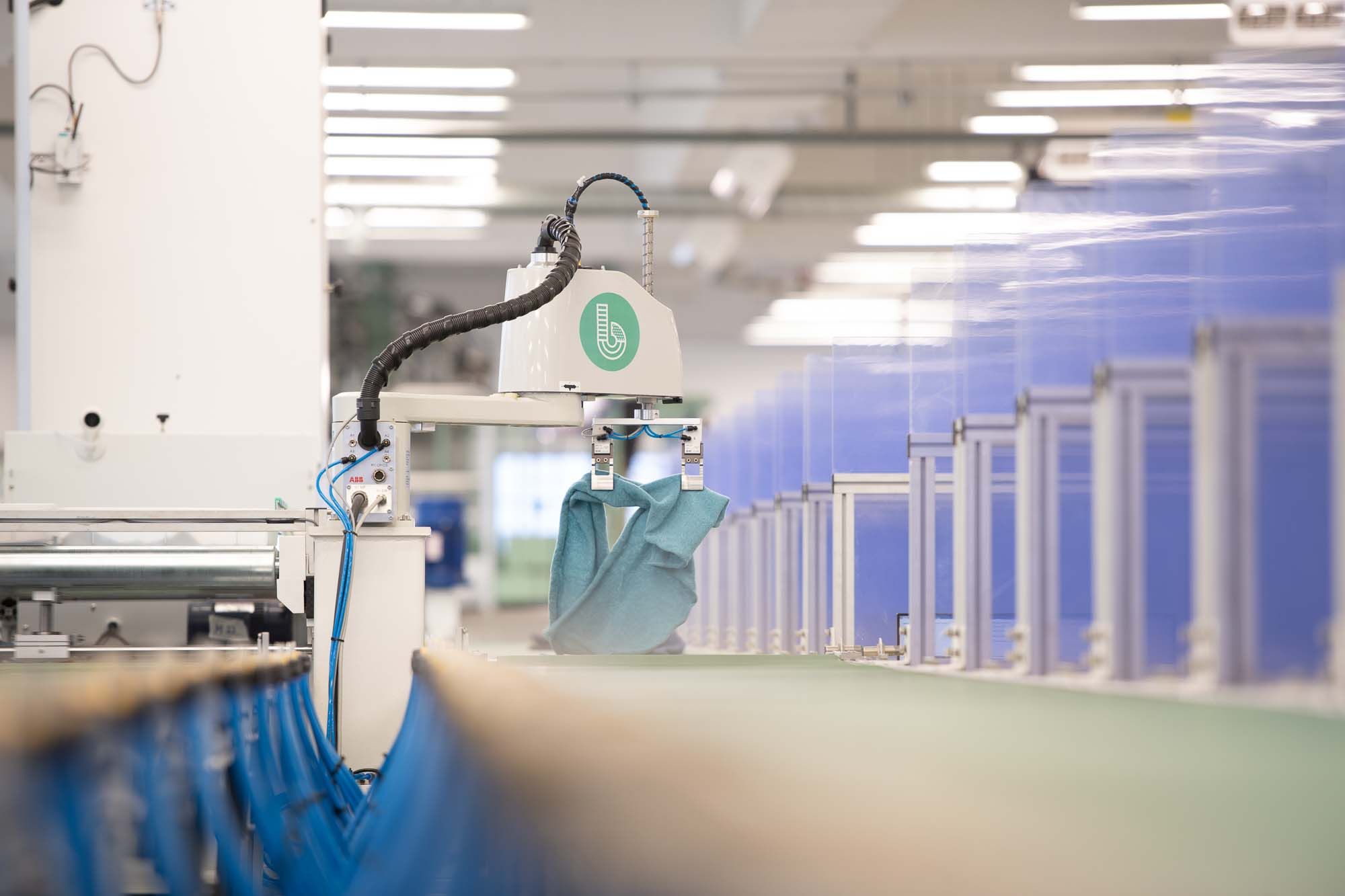
Q: How does the Billie system work?
A: The six-step Billie System starts with using ozone to sanitize the "textile waste," which comes in the form of garments or fabrics. Non-fiber parts such as zippers, buttons and other trims are then removed, after which the fabrics are cut into smaller pieces. The next step is automatic color sorting which separates the trimmed fabrics into nine main color groups. Color-sorted swatches are then transferred by an automated guided vehicle for fiber processing where the textiles are cut, combed and carded to turn them back into fiber. After two additional stages of ultraviolet light sanitization, the recycled fibers twisted gently and pulled into slivers. The slivers can then be blended with virgin fiber to be spun into high-quality yarn. Once again, while many other textile recycling processes often use chemicals and require large quantities of water, The Billie does not use any water and does not emit hazardous discharge.
Q: How does the Billie system help support a more circular economy?
A: The Billie presents an option to meet a growing interest and need to have sustainable and circular practices. Sustainability is not a trend; it's a necessity-especially given the current growing climate change crisis. Globally, less than 1% of materials used to produce clothing is recycled into new clothing, representing a loss of more than US$100 billion worth of materials each year. The Billie System directly contributes to promoting a circular economy by saving textile waste from landfills and bringing it back into the value chain.
Q: Could you tell us how consumers could support this type of upcycling?
A: Consumers have the power to drive demand and influence/pressure brands to become more sustainable. They can express their desire for more sustainable products to the brands by asking for, buying and using more upcycled products.
The Billie and Novetex have partnered with numerous organizations across a wide range of industries to upcycle their textile waste into new yarn for making a variety of products. For customers who wish to enter a closed-loop production cycle and advocate for a circular economy, The Billie System can provide them with a range of upcycled options while minimizing negative environmental impact … To further promote the use of upcycled yarn processed by The Billie System, we have designed our own product collection so that people can easily "touch and feel" the quality and see the possibilities of applying upcycled yarns in their design and production.
Balancing all the aspects of her life

Q: How do you manage your time between Novetex Textiles Limited, Novel Investment partners, Novel Park Investments and the Bai Xian Asia Institute all together? How do you balance all these ventures at the same time?
A: I am very fortunate and blessed to have great partners and colleagues across the different businesses. It is always more optimal when you have multiple brains and multiple hands on deck than to be a one-person shop. If you asked my colleagues, I think most, if not all of them, will say that I give them a lot of leeway and space for idea generation, management and execution. It is very important for professional and personal development for the individual to feel useful, respected and valued. When staff have a sense of belonging in the organization, their performance reflects that, and when you have a cohesive team working together, it's like an engine with well-oiled cogs and gears.
Another plus is that there is a lot of "synergistic crossover" at the very top level of management of these different operations. For example, the same CIO and CFO sit on the management team for Novetex, Novel Investment Partners and Novel Park. Open communication, relatively flat organizational structure and a culture of accountability and cooperation are some key factors that make the "balancing" possible.
Q: How do you balance your personal life and work life? Do you have any tips?
A: I get this question a lot, and this is what I always say. First of all, my balance is different from yours. Secondly, my balance today is very different from my balance when I was 30, 40, etc. The important thing is to recognize that one's balance has to be fluid and flexible according to the circumstances one is in. My advice for anyone looking for his/her balance is:
1. Know your priorities and accept that they can and will shift.
2. Understand your abilities and resources as well as your limitations.
3. Manage and use your time well; it's a treasured and limited resource.
4. Allocate time to do things for yourself or even to do nothing (to have downtime).
5. Set goals and expectations, but don't be overly intense or rigid; be realistic while you pursue your dreams.
6. Be a problem solver, not a problem creator – there will always be a way.
7. Lean on your faith and beliefs.
8. Draw positive energy from within and those around you; steer clear of negativity.
Q: What is one of the most important things you've learned throughout your career – either personally or professionally?
A: You can refer to my tips for balancing life and work. Another important thing is: keep learning and growing, no matter what position you hold within the organization. Especially as someone in a leadership role, make sure there are plenty of opportunities for subordinates and teammates to engage in opportunities that are challenging so that they can develop both personally and professionally.
Understanding life's balances

Q: What does your day-to-day life look like?
A: I usually wake up around 7:00 or 7:30, depending on the day of the week. The day often begins with exercise. [I was] introduced to Muay Thai by a very dear friend. I have been boxing now for a year and nine months. It is the best full-body exercise regimen I have ever done, and it also trains reaction and strategy. Work for me does not really have a start and end time (It is not at all as scary as it sounds). I do not have a 9-to-5 schedule; whether I am physically in the office or traveling in another time zone, I am generally very accessible. Meetings nowadays can take place over lunch or coffee or by Zoom, which makes fitting things into the day a lot easier. Besides work, I also make an effort to allocate time throughout the week to be with family and friends. Personal relationships and interaction are absolutely necessary to keep ourselves physically, mentally and emotionally healthy.
Q: What do you do in your downtime? How do you unwind?
A: I like to cook and invite friends over for a meal. I knit and crochet (easy projects, very relaxing and therapeutic). I exercise to bring my energy level up/recharge, and at the end of exercising, it's easier to rest and relax. One thing, though, it's not easy to find me doing nothing!
Q: What's next for you? Any new projects you'd like to share with our readers?
A: We have so much on our plates already, but we're always open to exploring new opportunities, whether they are extensions of things that we are currently working on or in areas that we have never touched. We recently worked with a number of young Hong Kong fashion designers to create pieces in their collections using upcycled/recycled yarn. We have also been approached to make art using sustainable textile materials. I think the possibilities are quite endless.

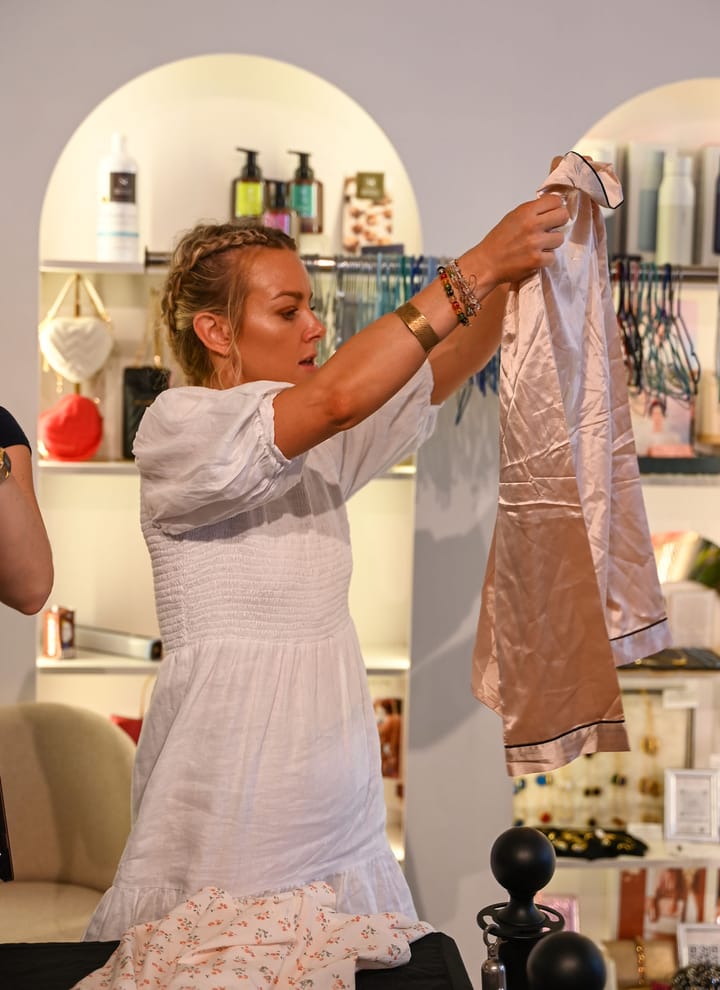
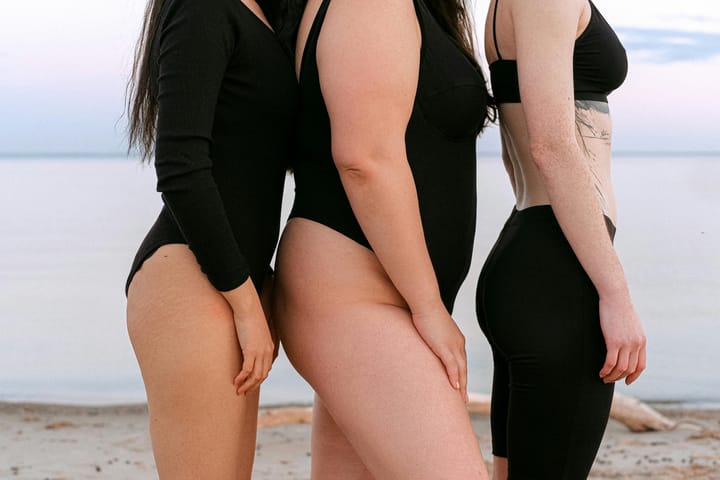
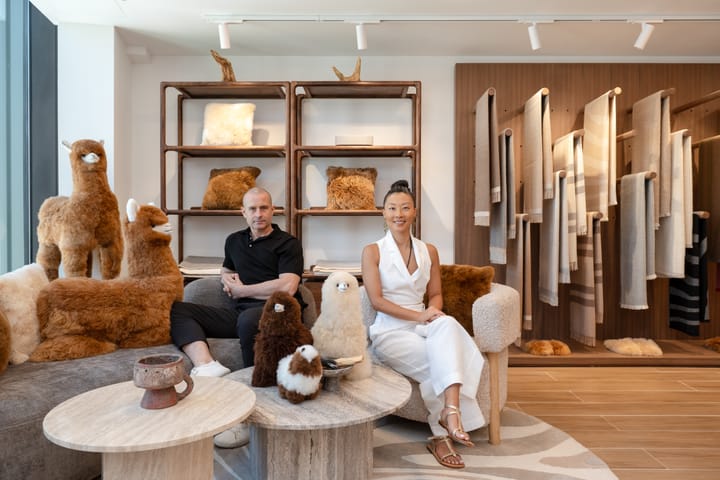
Comments ()